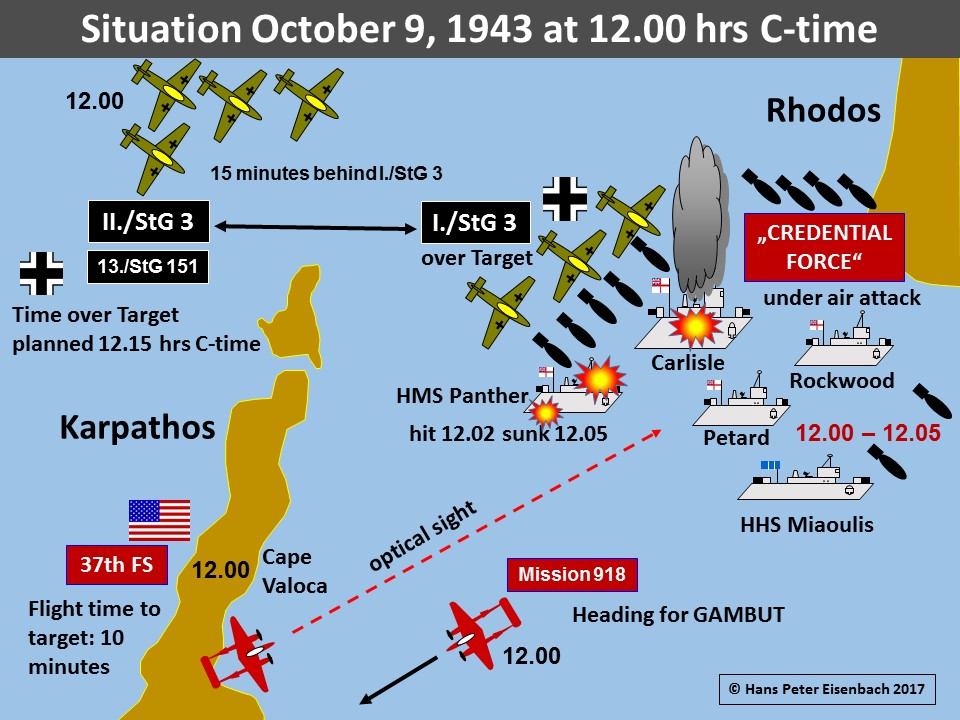
Dogfight over the Aegean: A minute by minute account of the Air Battle west of Rodos island, October 9, 1943
Aircraft wrecks, Interviews, WW2, WW2 in Greece, WW2 WrecksBy Pierre Kosmidis
Photos, documents and additional information by Lt. Col. (ret.) Hans Peter Eisenbach, used by kind permission.
Click the links below for additional reading:
A personal account of a Luftwaffe pilot in Greece: Friedrich “Fritz” Eisenbach in Kefalonia, Rodos, Leros – The Ju 87 “Stuka” dive bomber operations in Greece, 1943
Identified! WW2 German Stuka Ju 87 aircraft S7+GM shot down in a dogfight on October 9 1943 recovered west of Rhodes
Hell over the Aegean: The Ju-87 “Stuka” attack of I./StG 3 against the Royal Navy, 9 October 1943
Dogfight over the Aegean: The Leverette Report illustrated – P-38 “Lightnings” against Ju 87 “Stukas”, on 9 October 1943
Letter of a German Flight Leader to the wife of a Luftwaffe pilot:
“I have the task, to tell you that your husband is missing in action after an air attack against a formation of British warships on 9 October 1943.
We must expect, that he has been killed.
I myself was flying as flight leader right of the aircraft of your husband. When attacking the target, we got heavy Navy anti air fire and I lost the aircraft of your husband out of sight.
After dropping the bombs we were attacked by enemy fighter aircraft.
During the developing air combat the aircraft must have been shot down from enemy aircraft and your husband must have been killed.
The returning air crews could not make any statements as they all were involved in air combat.”
A mystery that lasted for over 7 decades was solved, thanks to the detailed research by Lt. Col. (ret.) Hans Peter Eisenbach, who managed to unravel the exact specifics of a largely forgotten episode of WW2 in Greece.
Lt. Col. (ret.) Hans Peter Eisenbach dispelled the erroneous notion of decades and proved, sifting through war time reports, personal documents and first-hand accounts, that the Luftwaffe attacked the Allied fleet off Rodos island on October 9, 1943 in two waves of Ju87 “Stuka” dive bombers, with a time difference of approximately 15 minutes from each other.
While the first wave of Ju87 “Stuka” bombers sunk one British Destroyer and damaged a Cruiser, before returning unscathed to its base, the second wave suffered catastrophic losses, with one aircraft salvaged from the sea and finally identified, along with its crew.
This is the minute-by-minute account of this Battle, as prepared by Lt. Col. (ret.) Hans Peter Eisenbach specially for www.ww2wrecks.com

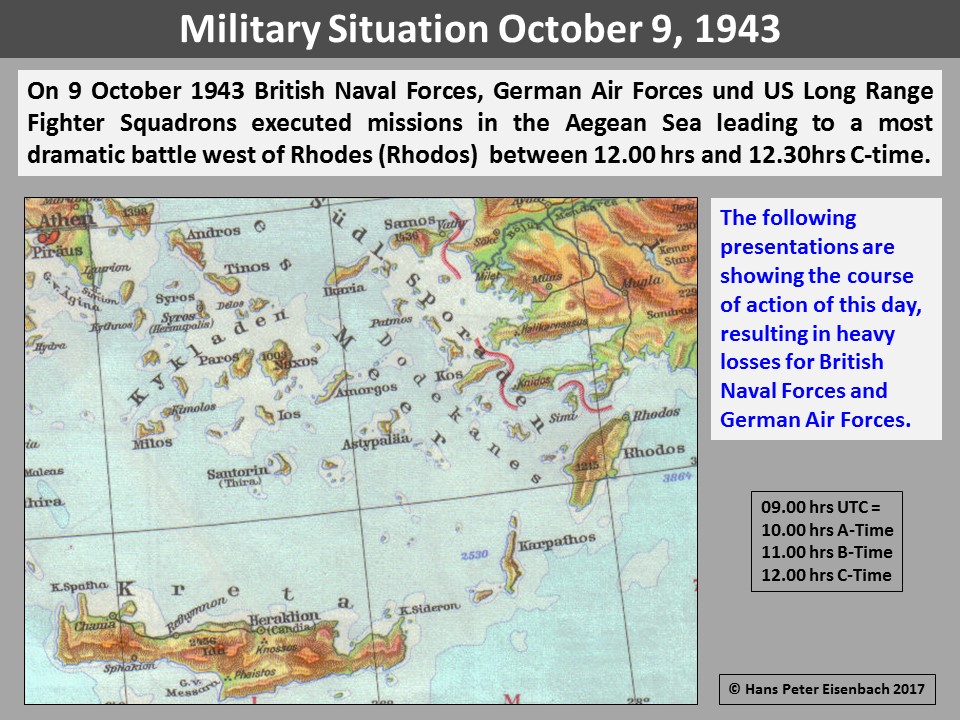
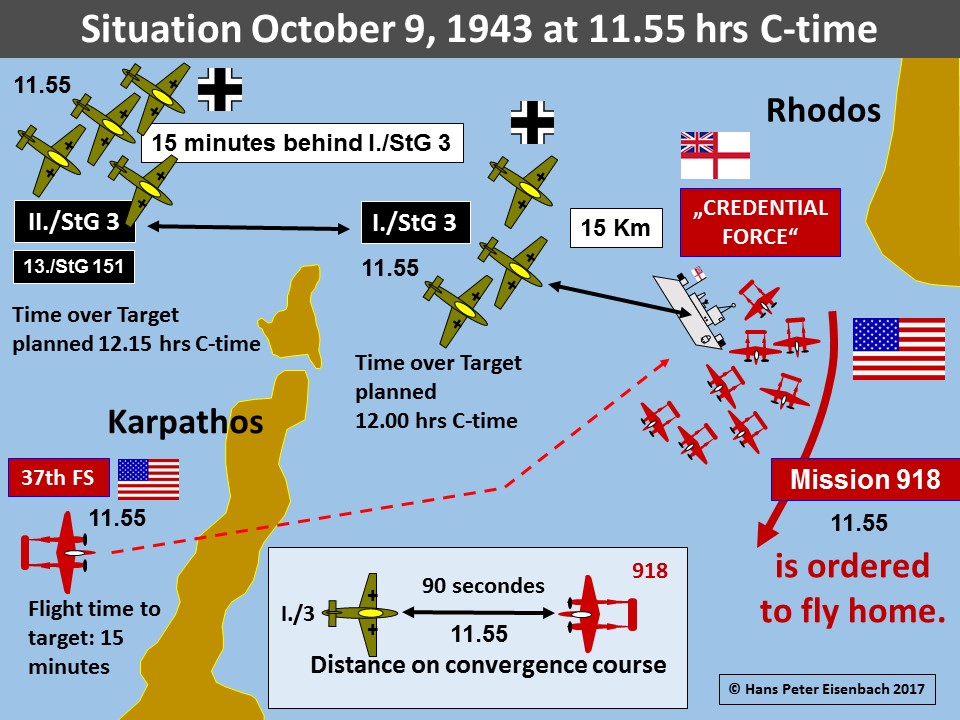

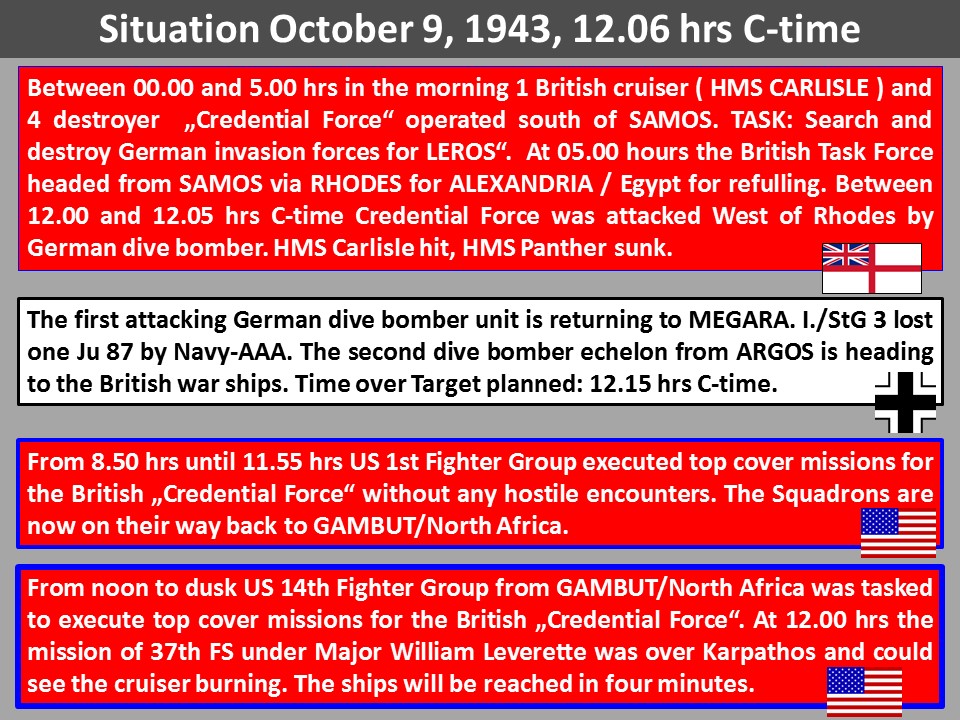

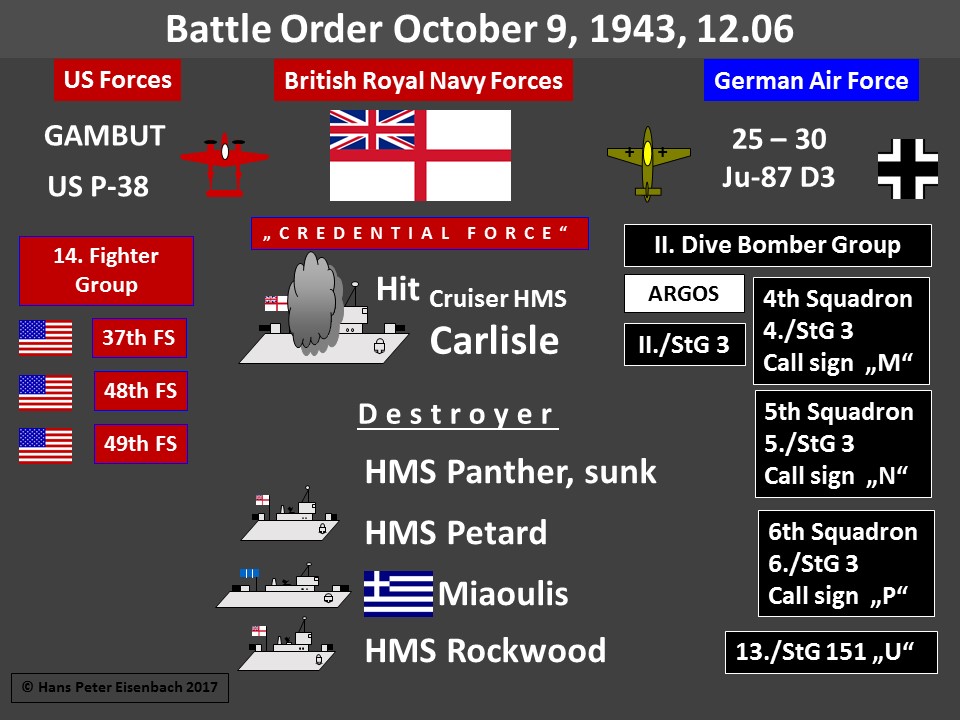
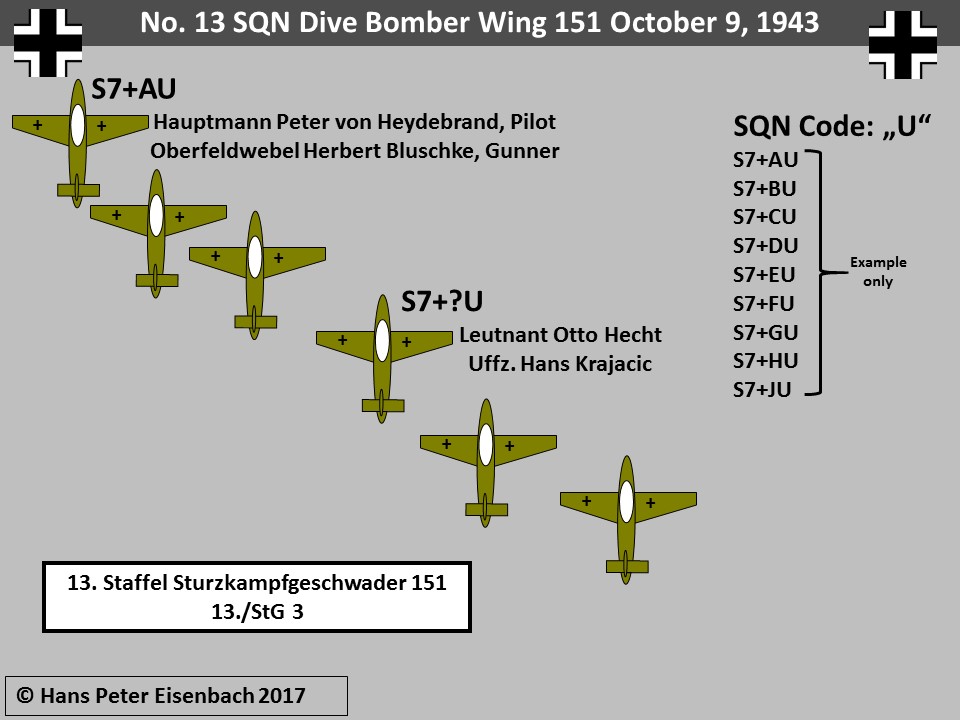
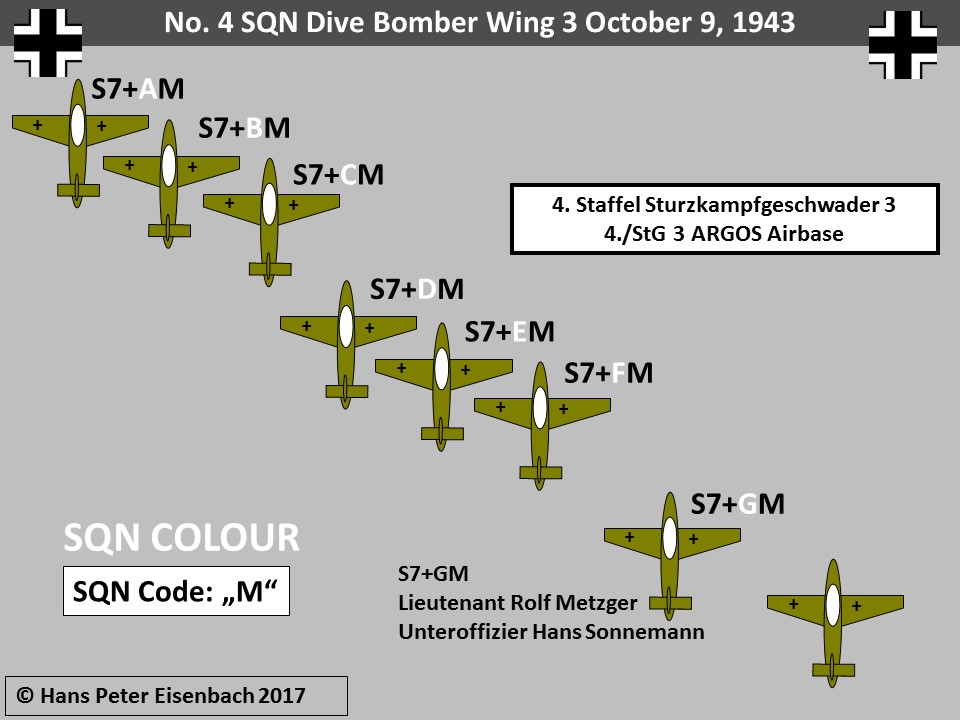
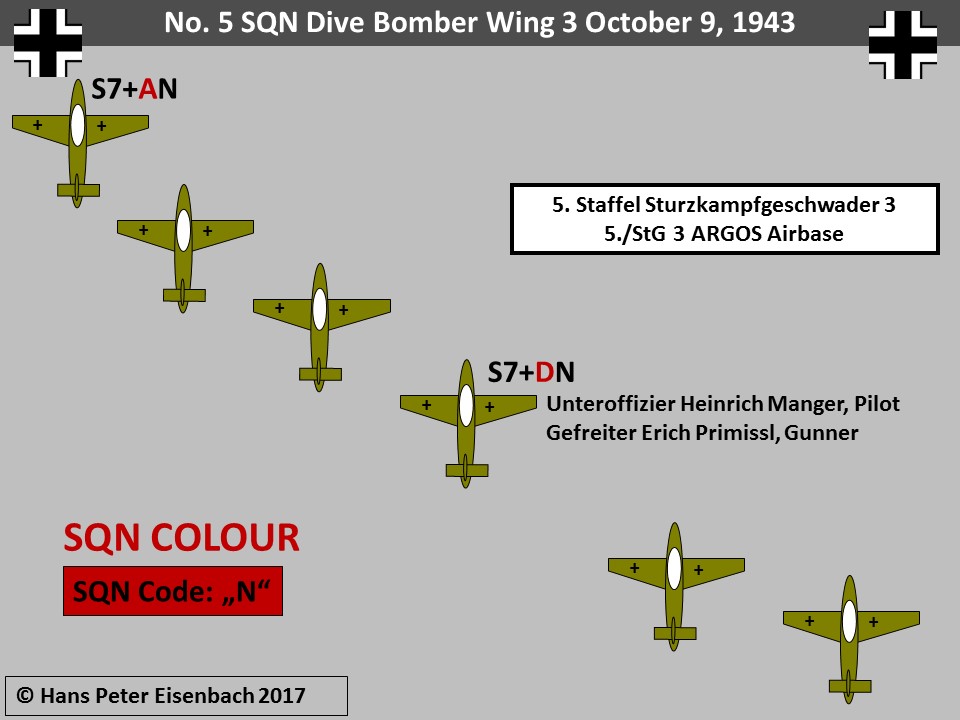

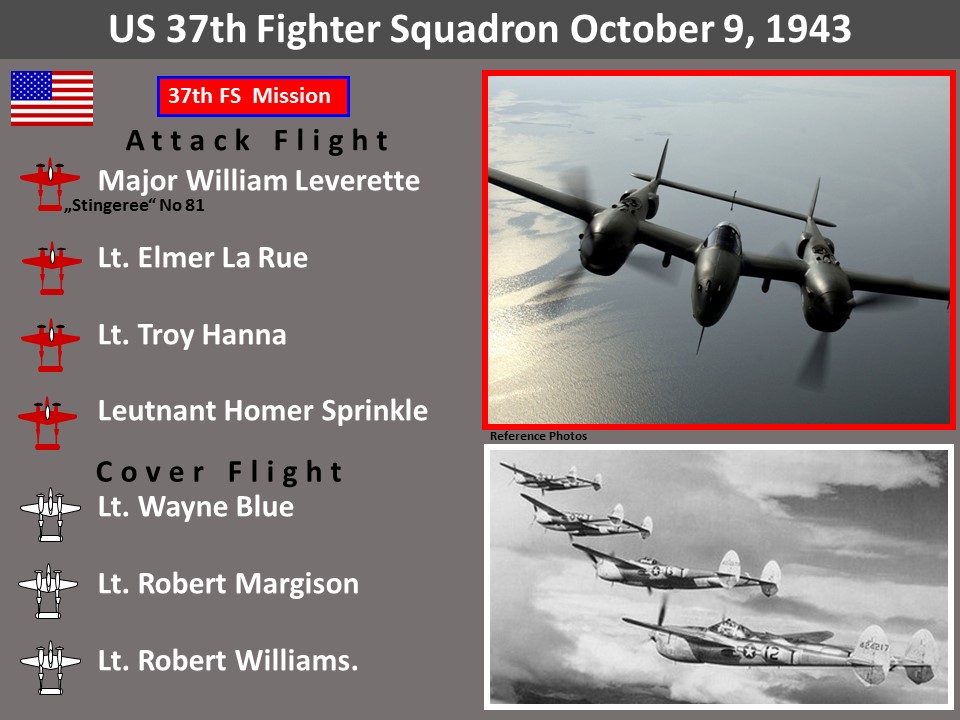
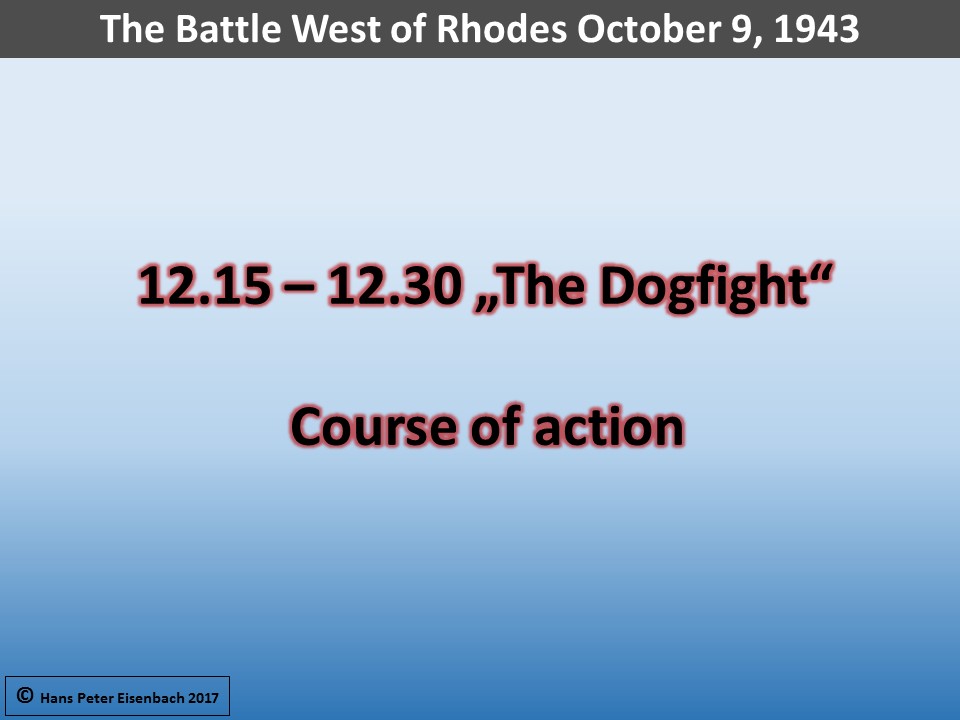
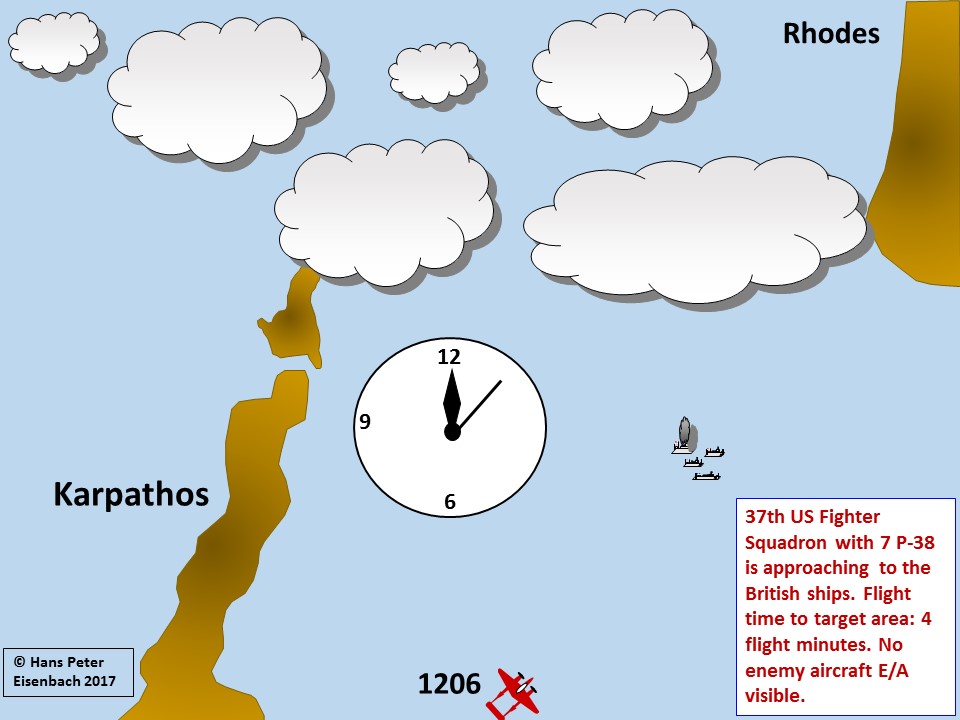
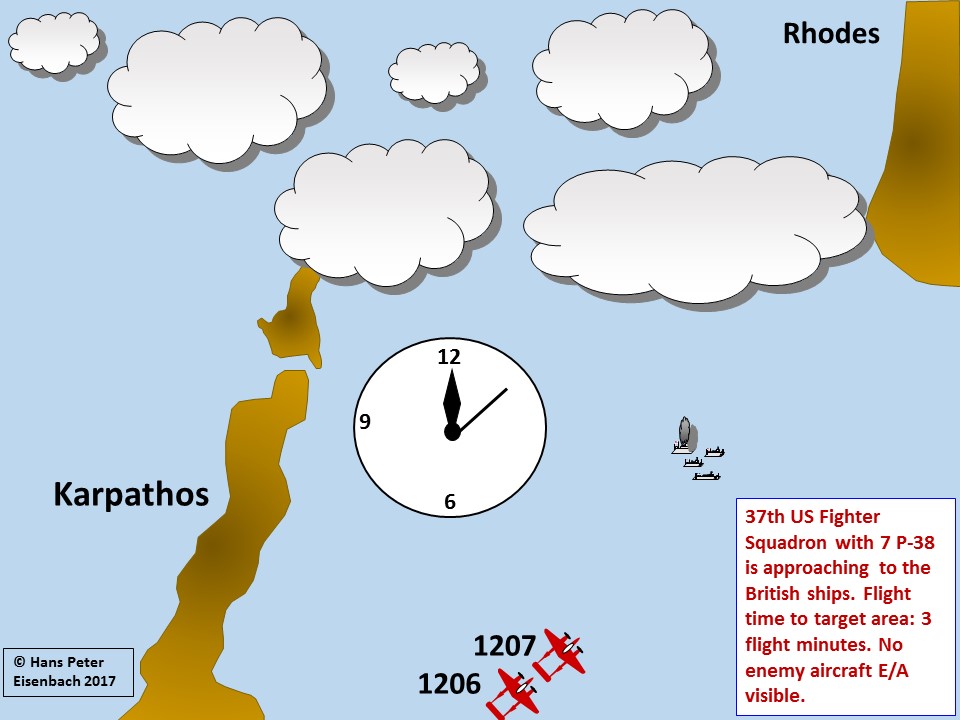
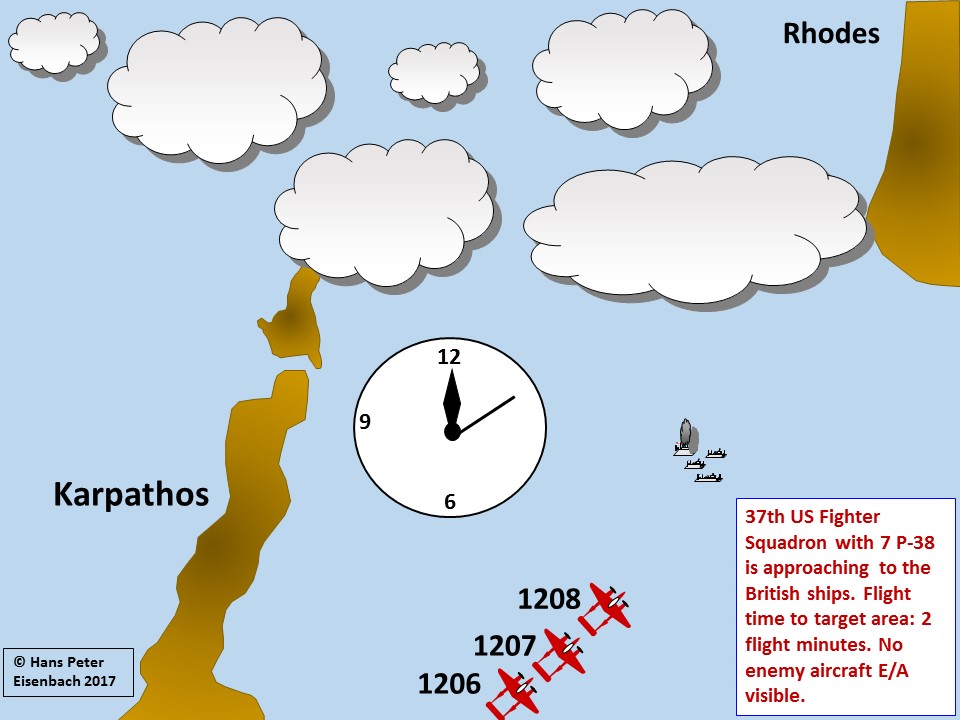
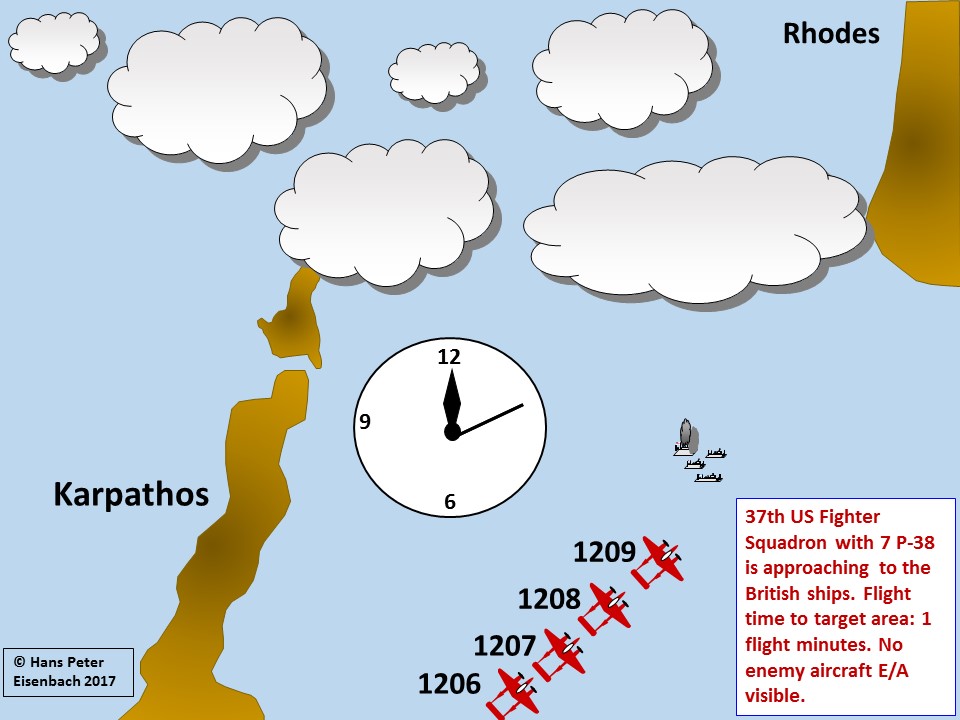
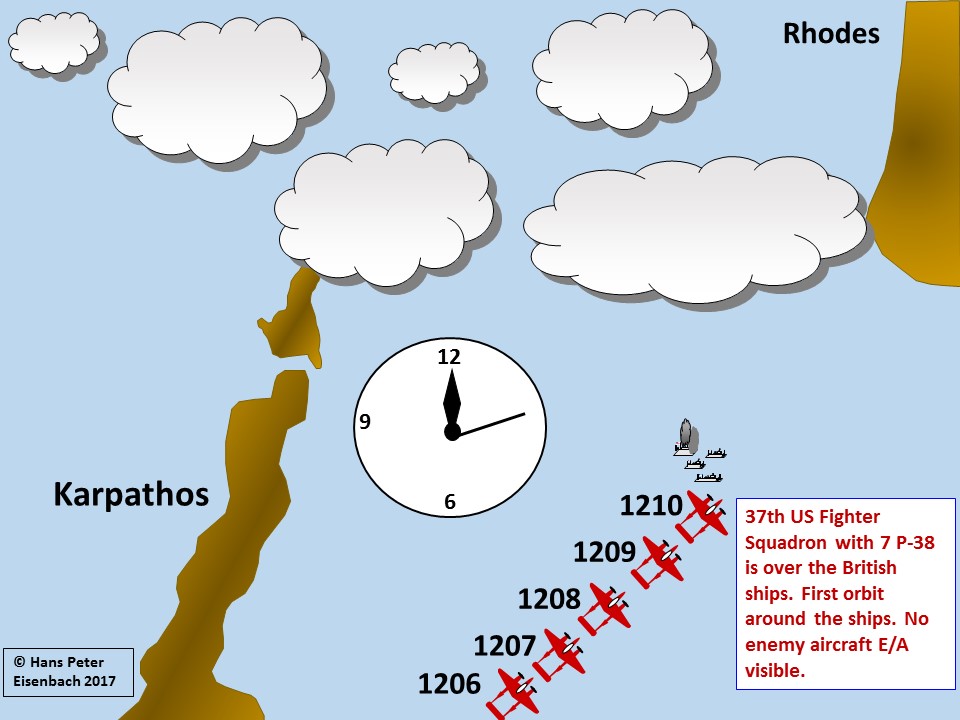
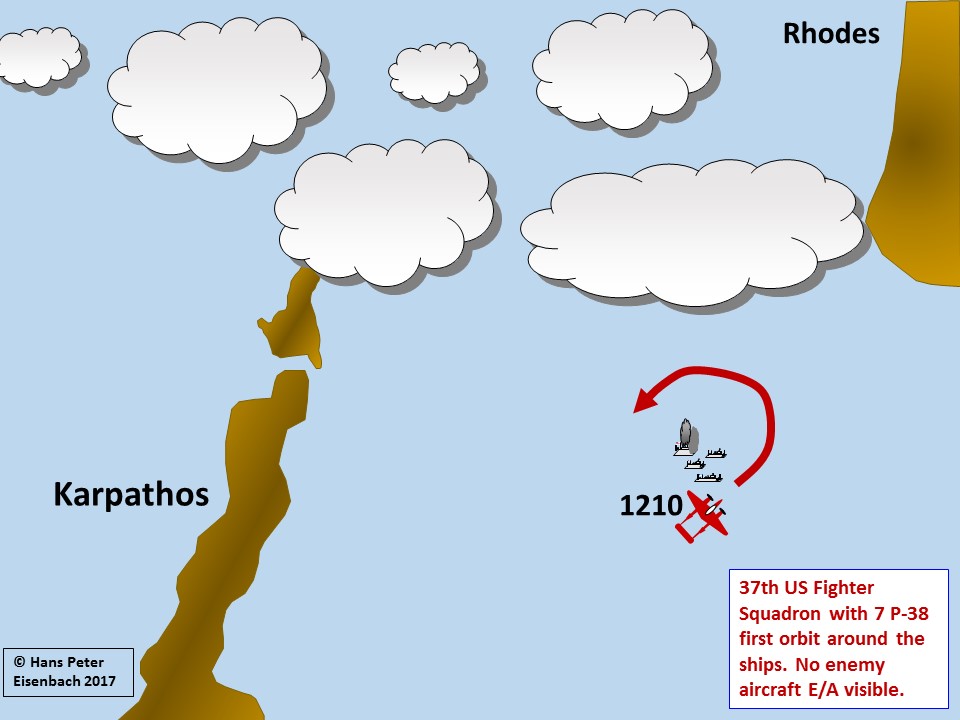
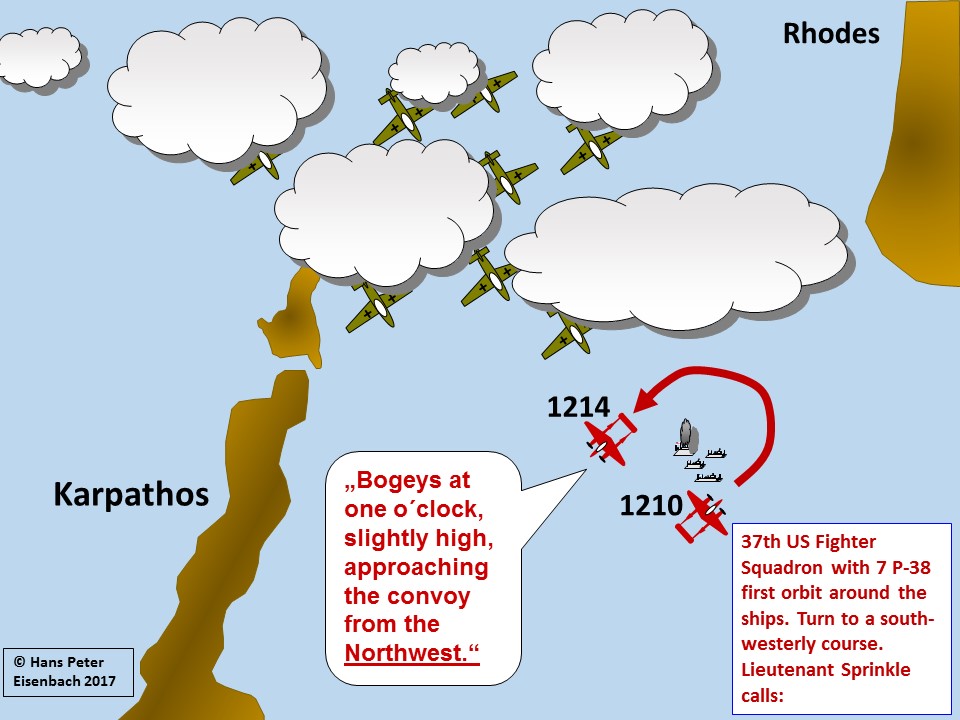
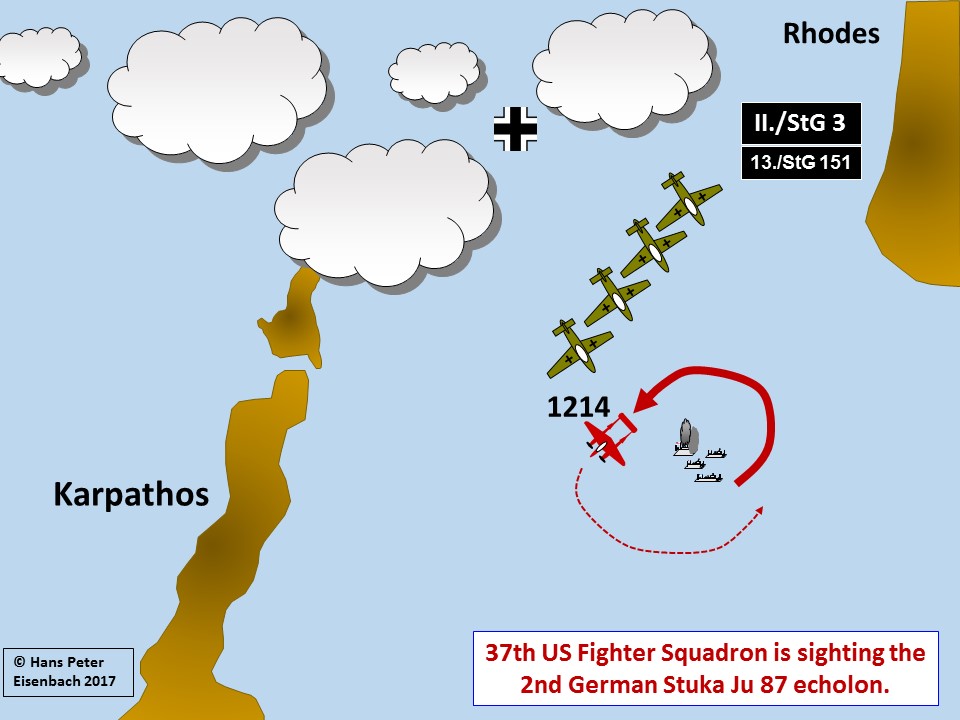
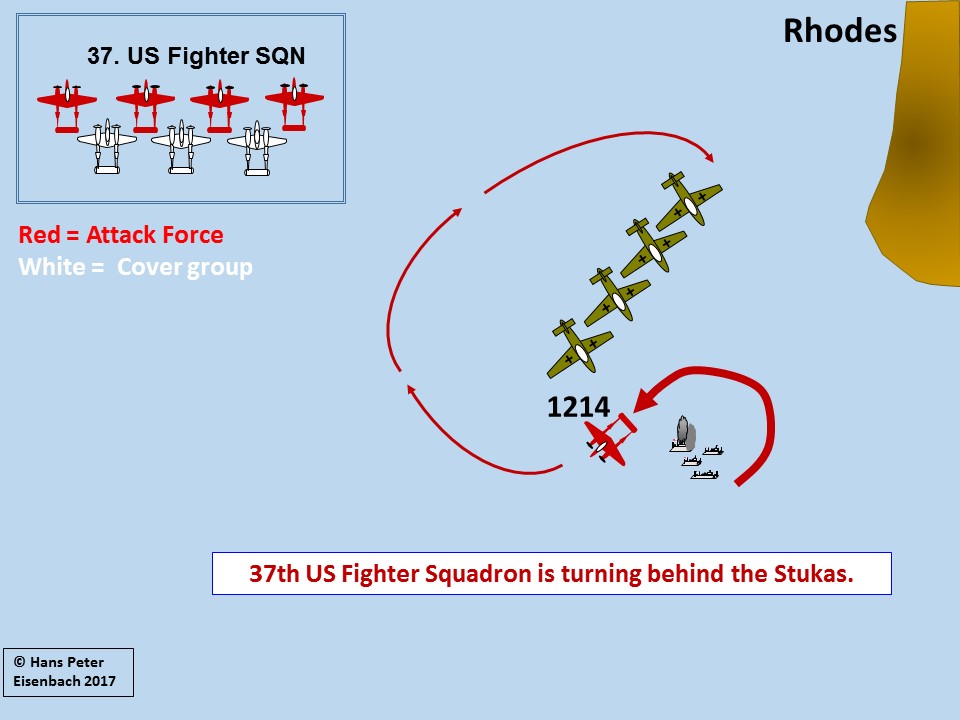
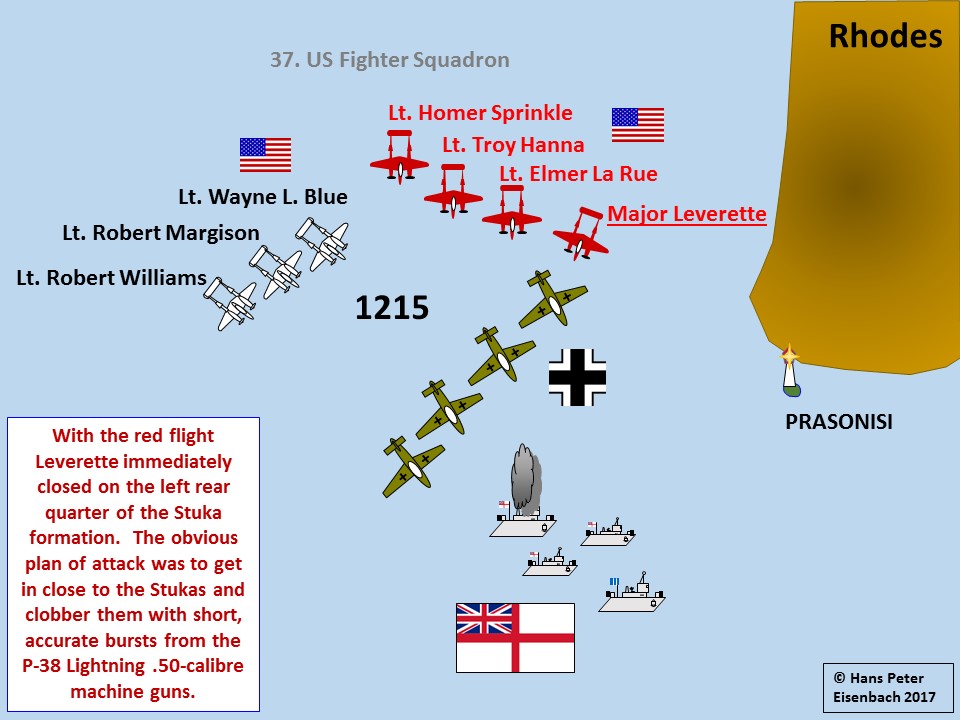
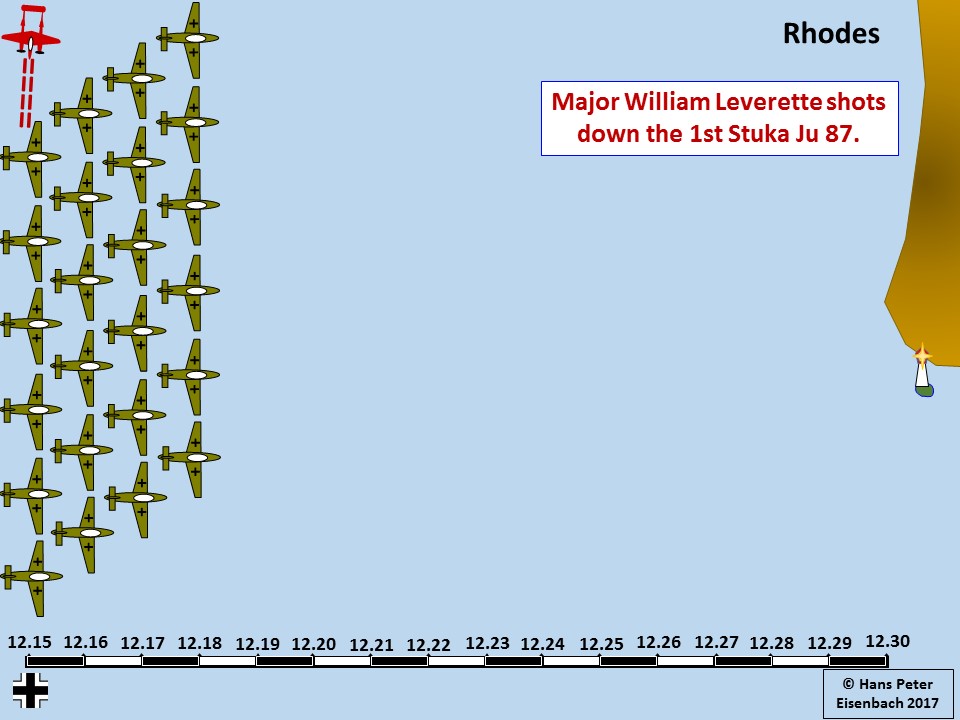
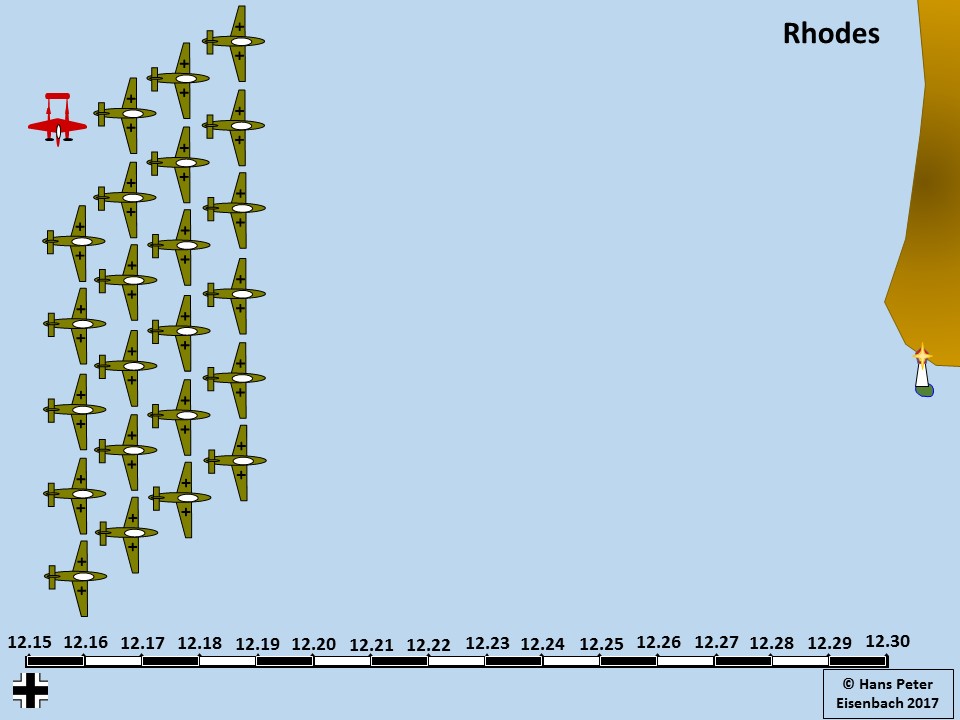
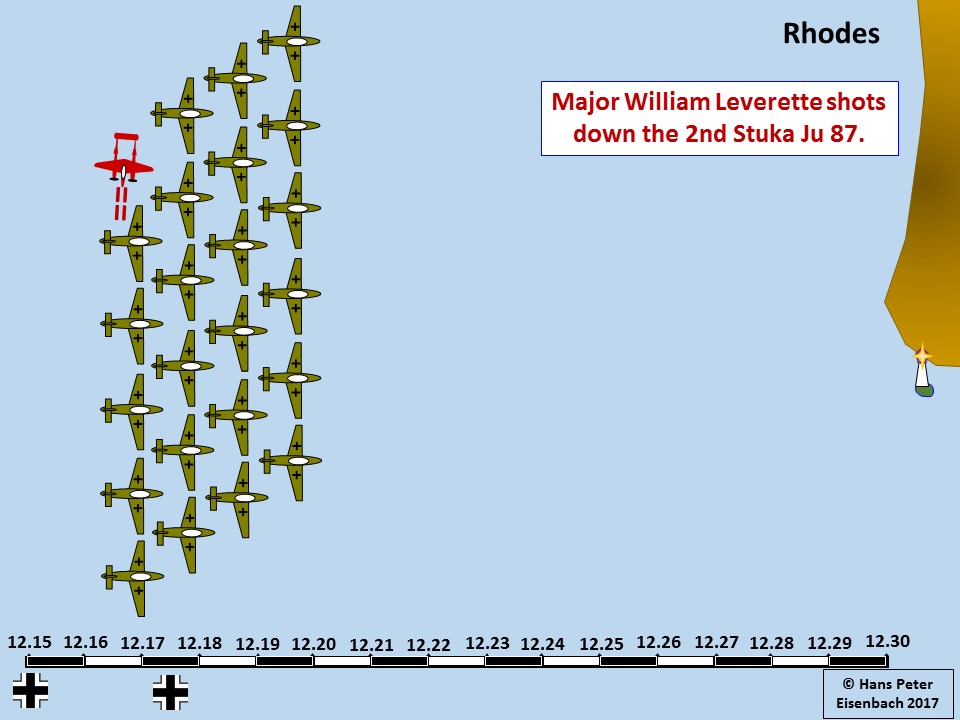
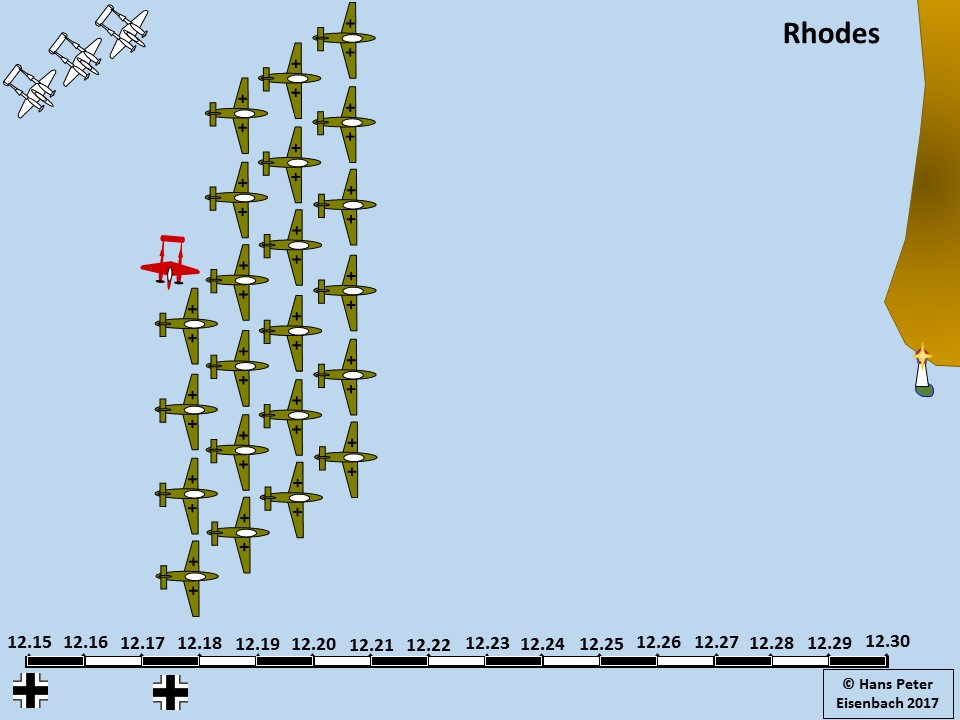
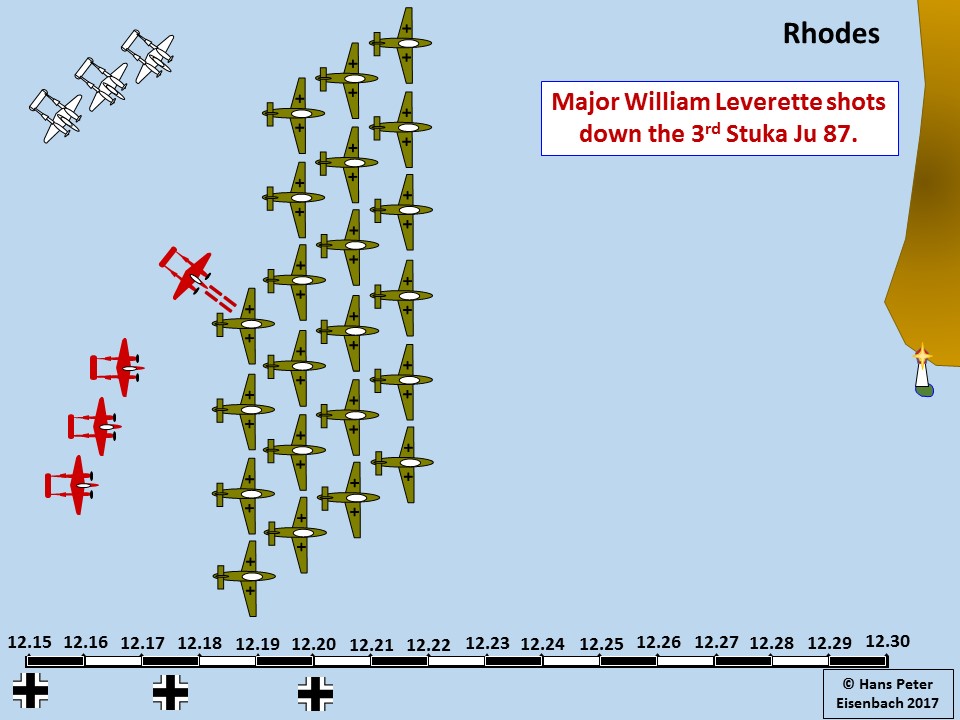
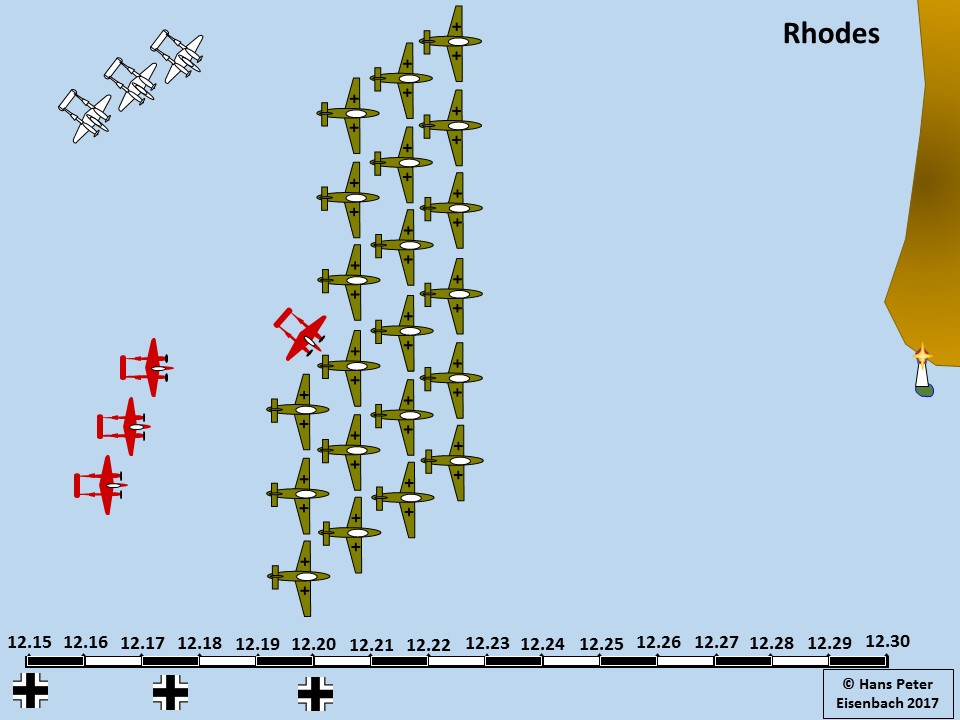
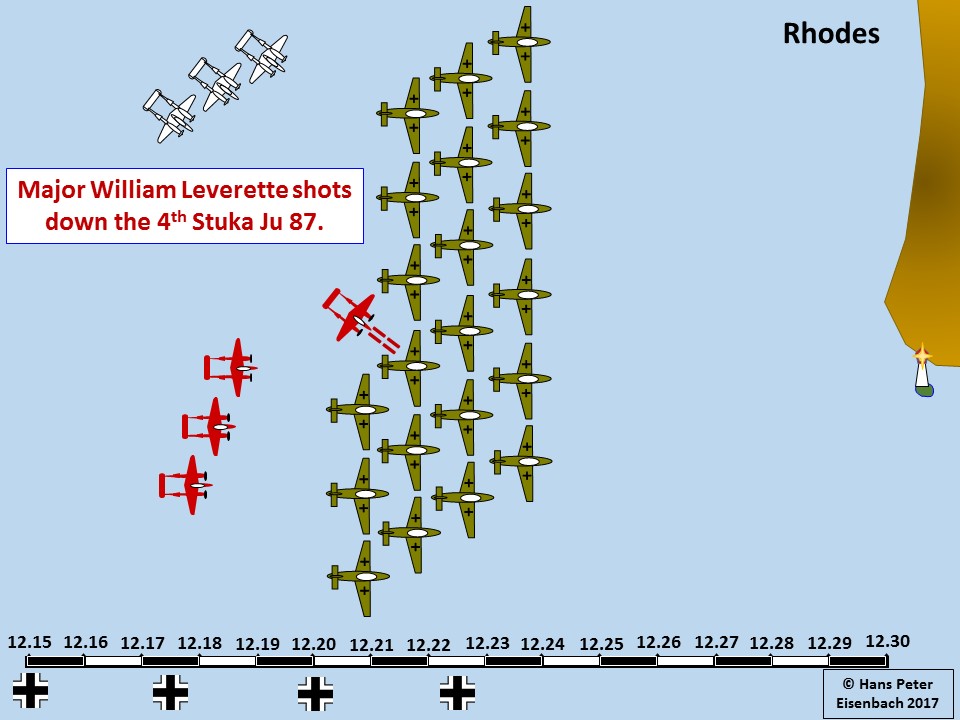
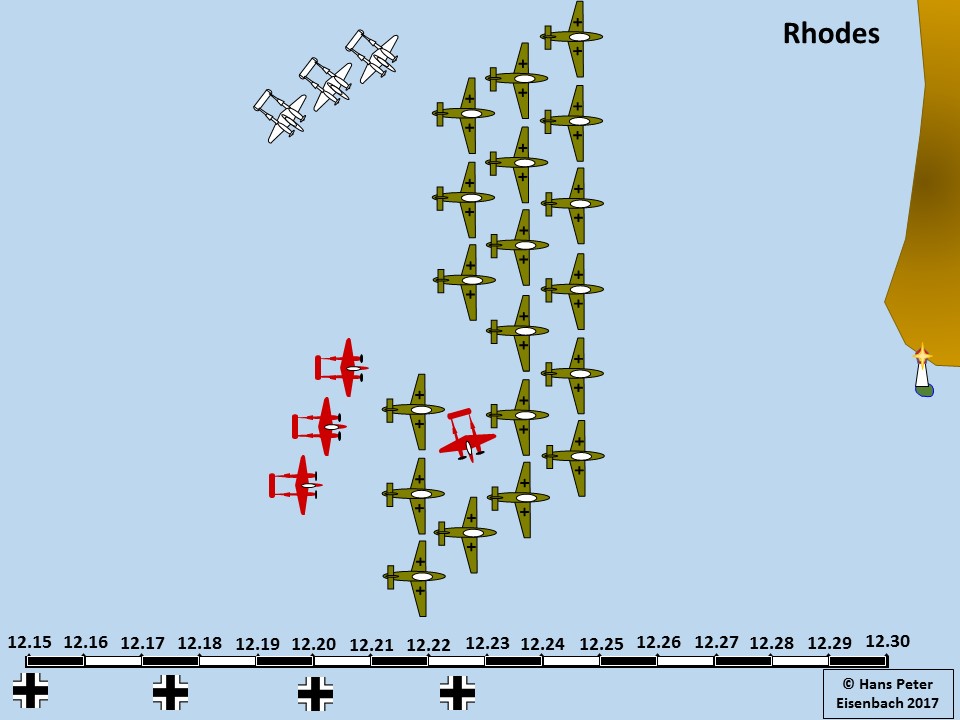
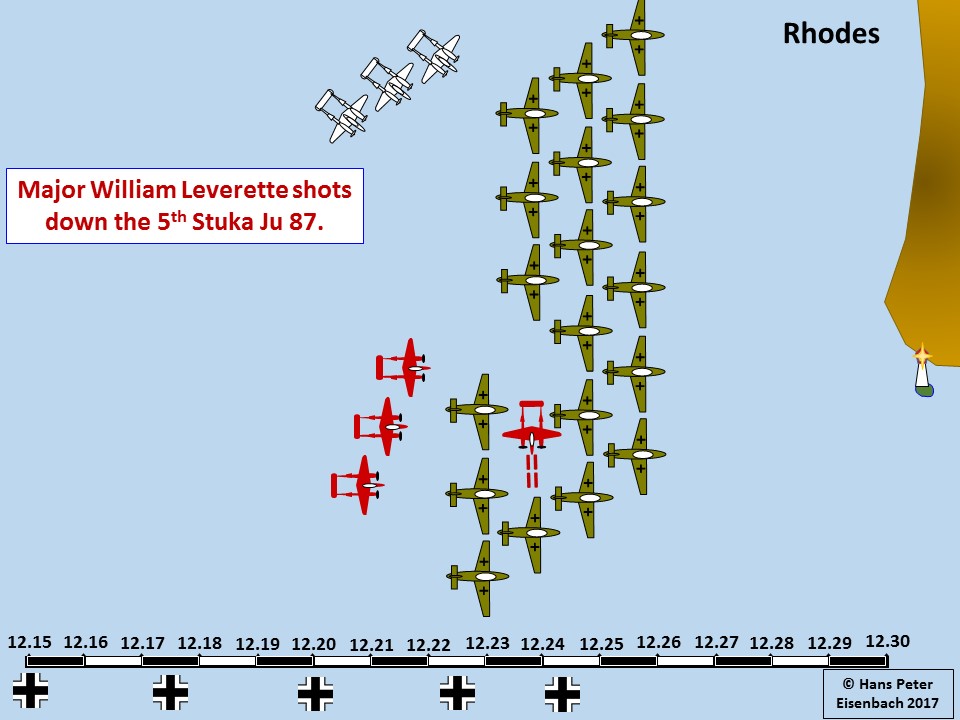
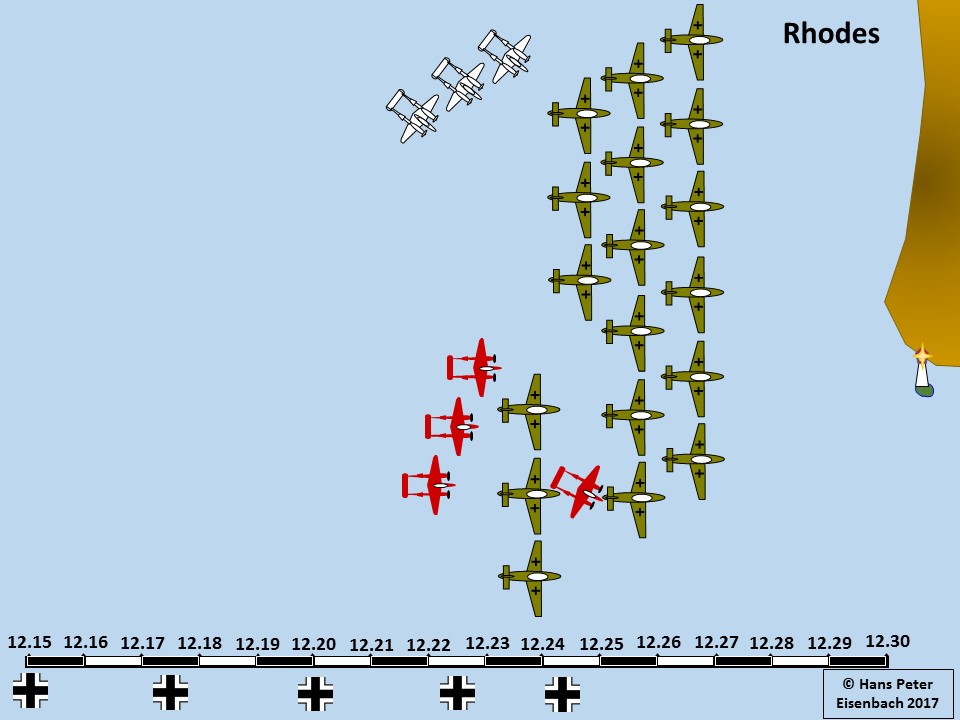
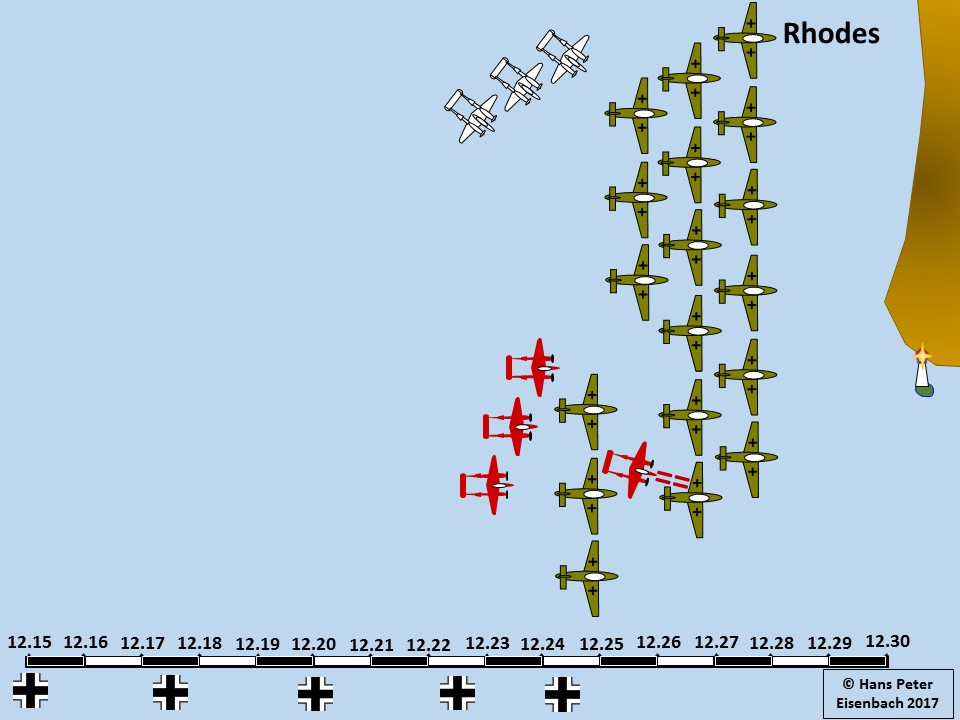

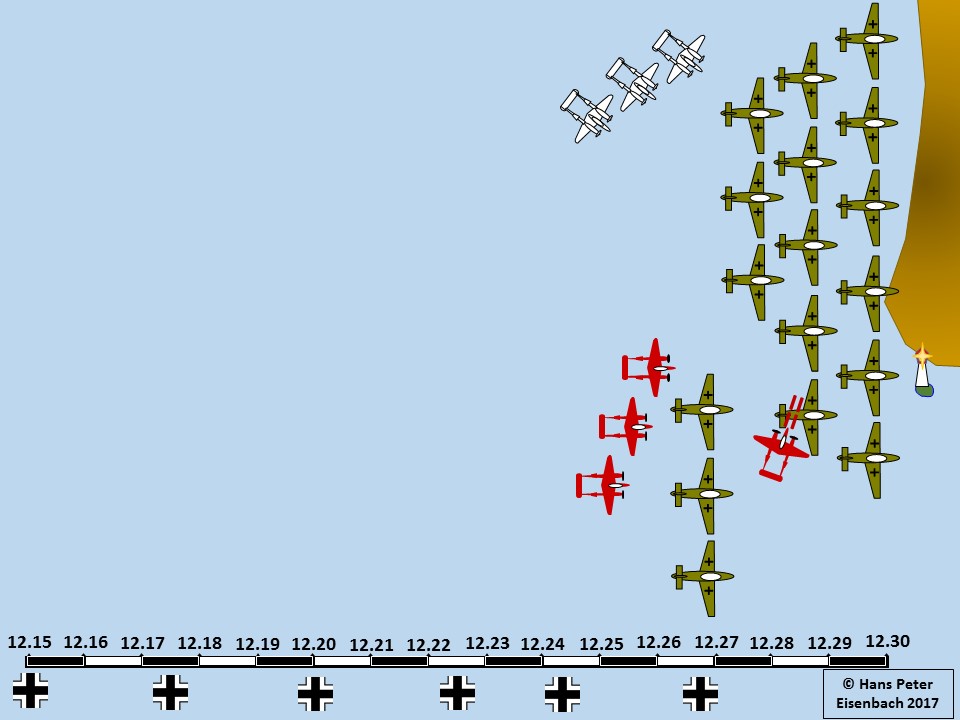
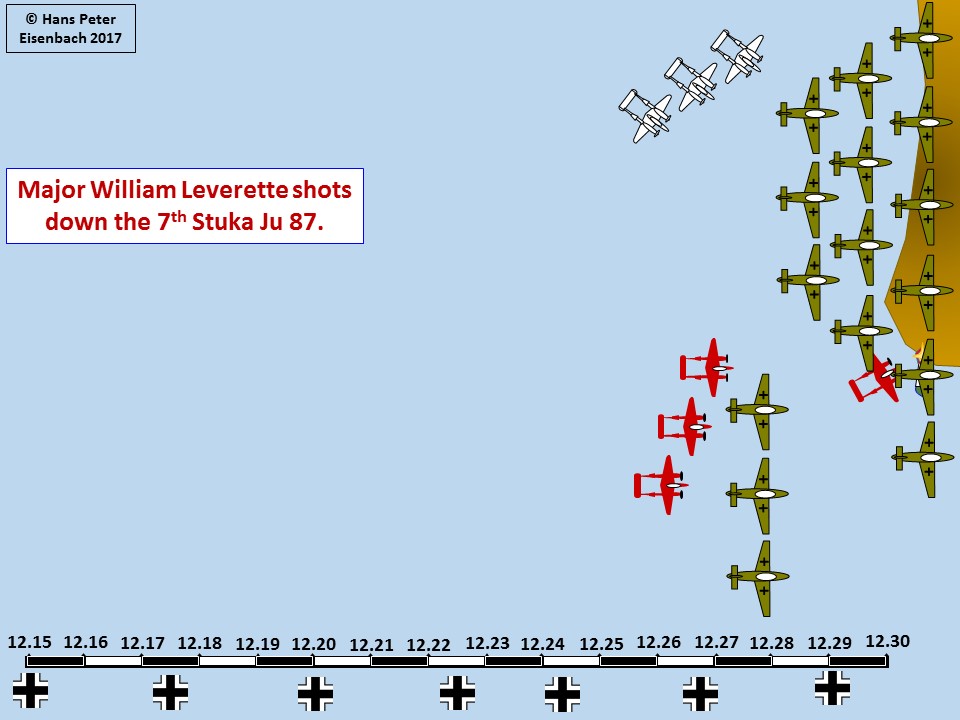
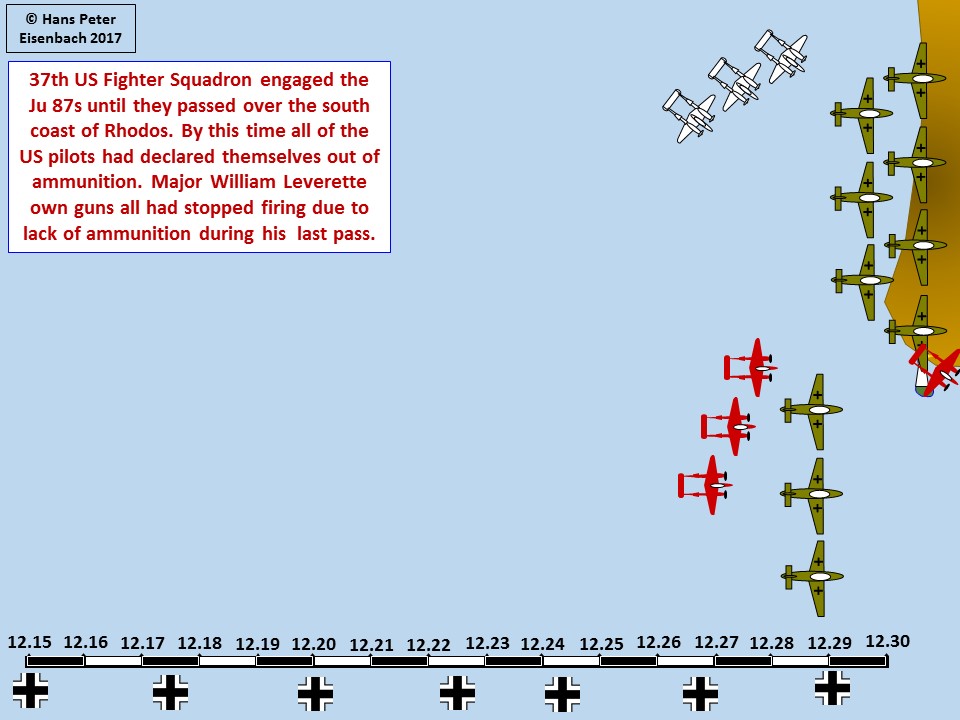
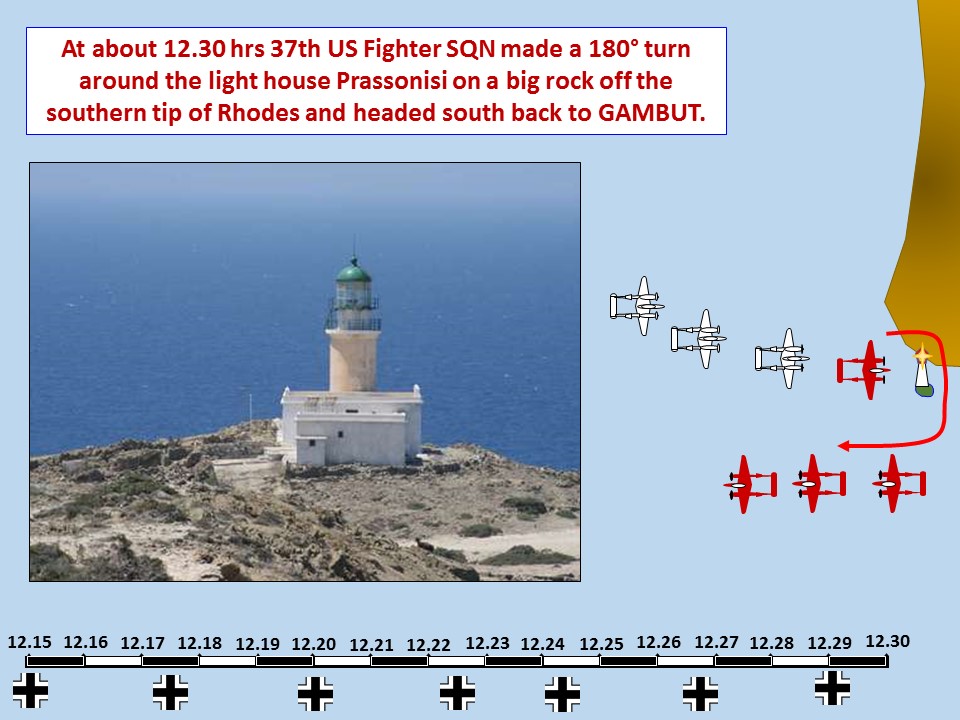
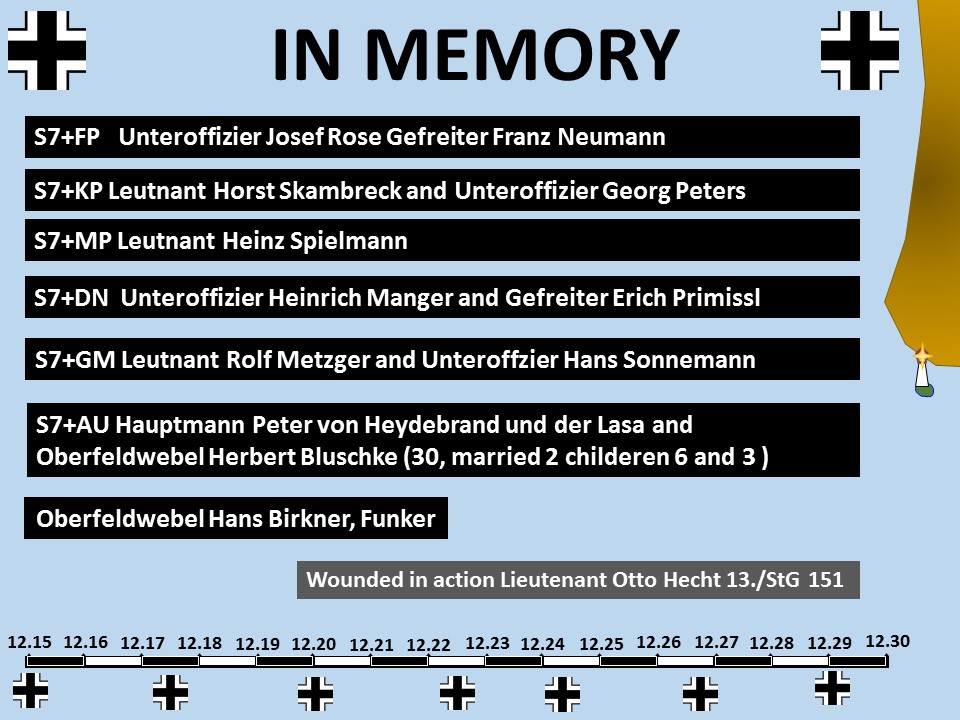
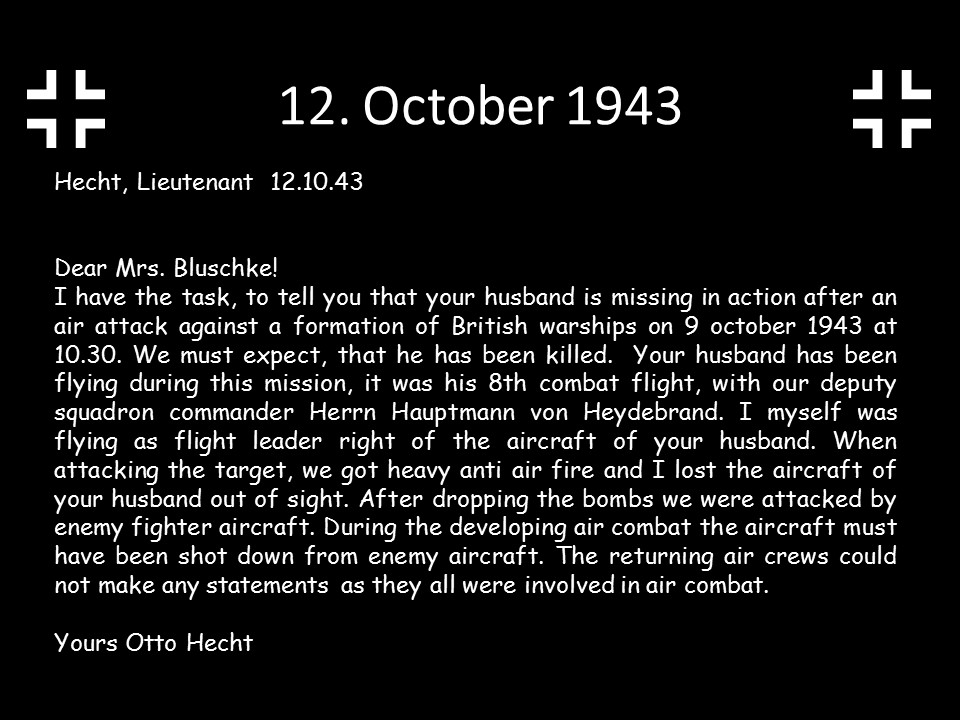
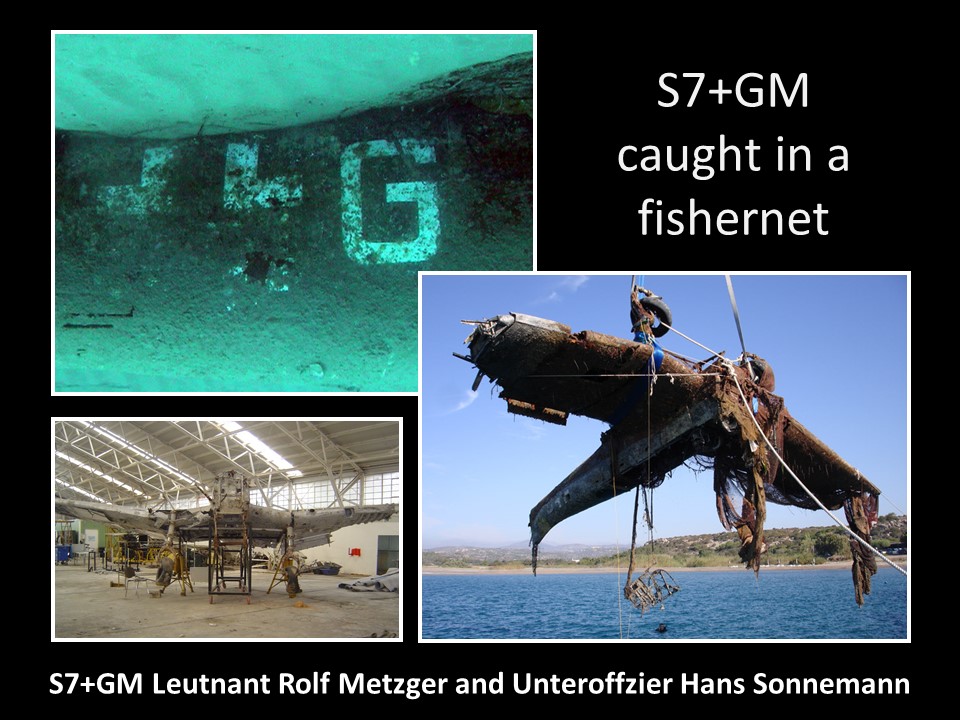

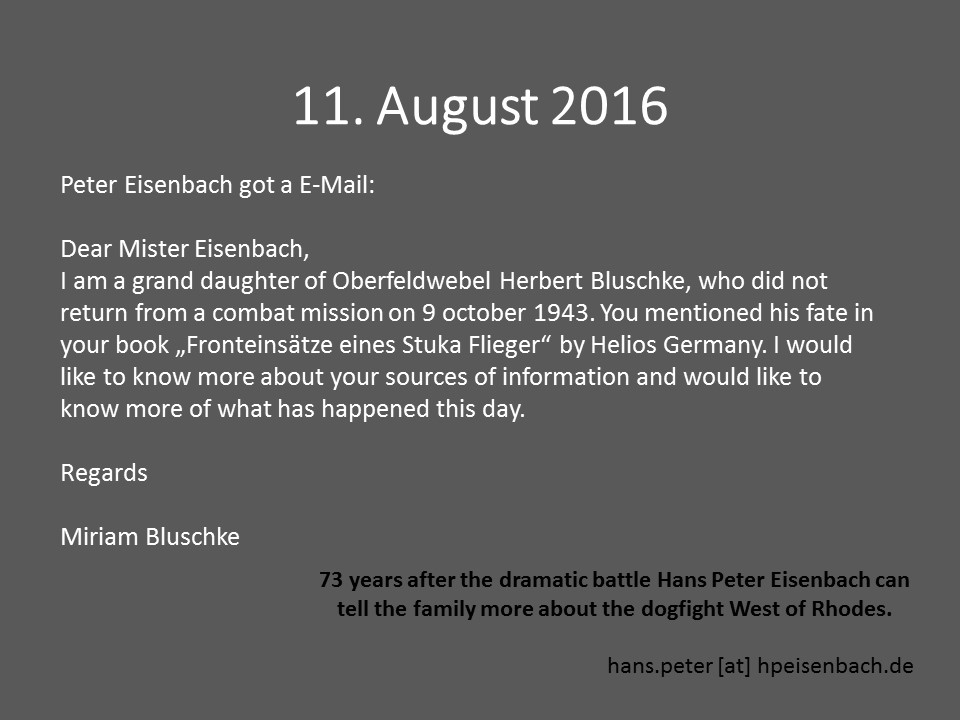
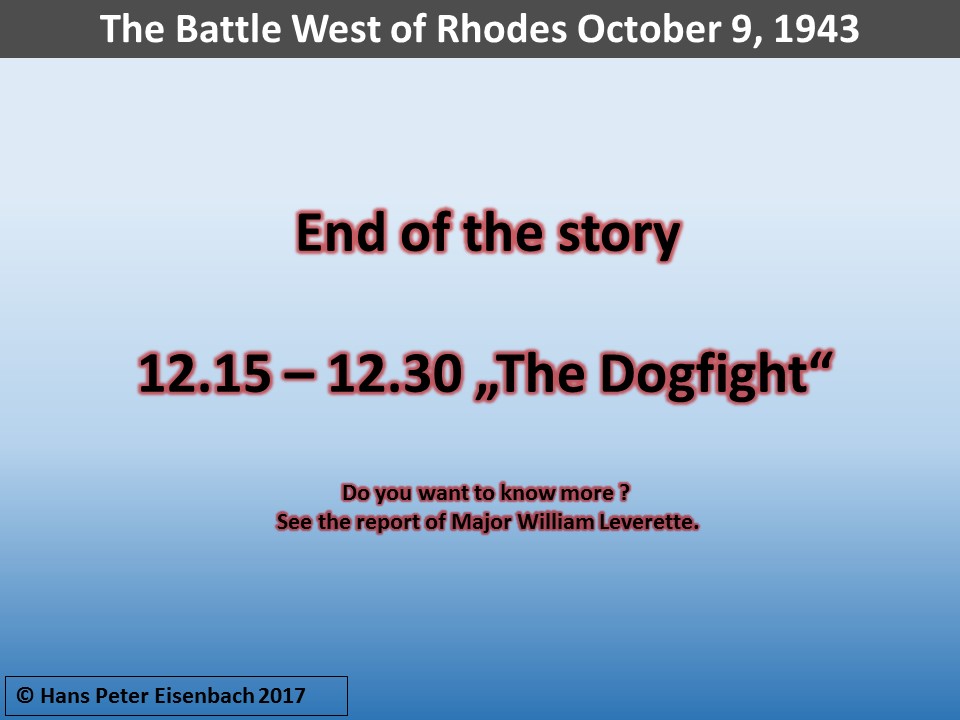
Links to Lt. Col. (ret.) Hans Peter Eisenbach publications:

http://www.naval-history.net/xGM-Chrono-06CL-Carlisle-Eisenbach%20%20Attack%201943.pdf
http://www.naval-history.net/xGM-Chrono-06CL-Carlisle-Eisenbach-USCAP.pdf
Fronteinsätze eines Stuka-Fliegers
Mittelmeer und Ostfront 1943 – 44 von Hans Peter Eisenbach. Ein Buch aus der Dokumentationsreihe »Der Krieg von unten 1939-45« 120 Seiten, fest gebunden, 103 Photos und Flugbuchauszüge, Format 17 x 23,5 cm
ISBN 978-3-938208-96-0 Preis: 18,50 € © 2009 Helios Verlag
Stuka-Einsatz an der Pantherlinie
